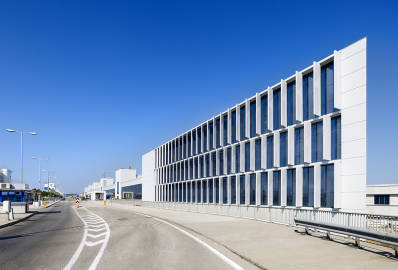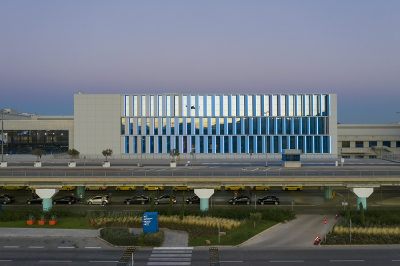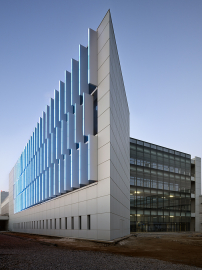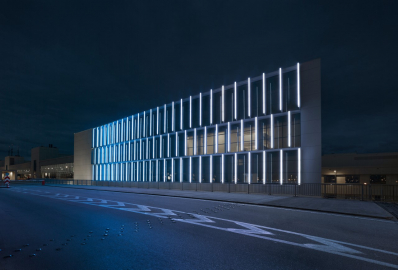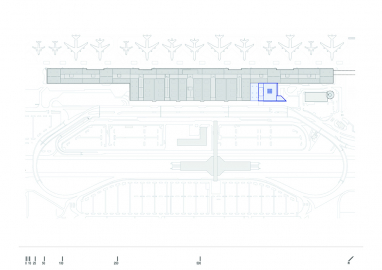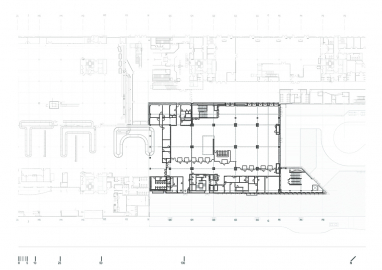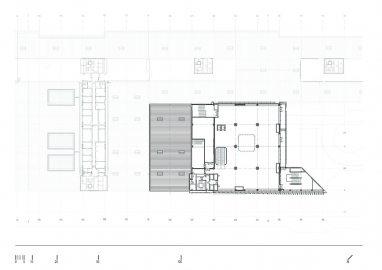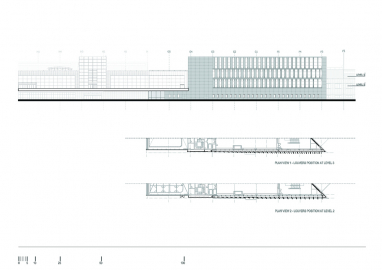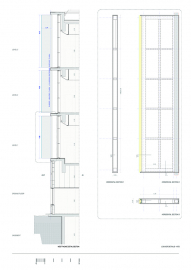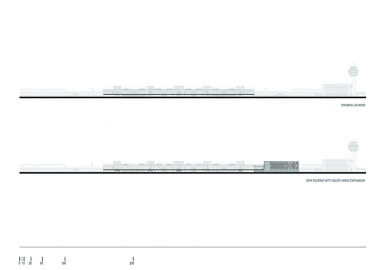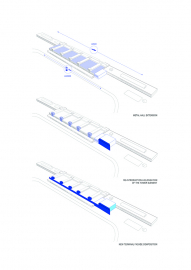South Wing Expansion of Athens International Airport Eleftherios Venizelos
The Expansion of the terminal building of Athens International Airport was instigated by a new European Regulatory Framework enforced in 2019, to cover a critical increase of Extra Schengen operational needs. The terminal building, approx. 168.000 sqm and almost 800m in length, had to extend by an additional 10% to cover the new capacity requirements.
Athens International Airport begun its operation in 2001 replacing the favored “Helliniko” Airport designed by Eero Saarinen. Dedicated to commercial air transport, the main terminal’s building enlargement of its footprint to the South, would add approx. 98m to a 354m façade and would provide sufficient space for the Extra Schengen operational areas as well as additional concession and back of house space. The client requested to replicate the original architectural design of the building, while upgrading the technology of the materials and construction systems, without implementing significant design variations to the exterior or the interior. The project was the first attempt to extend the terminal beyond its original envelope. The authors regarded this as an opportunity to re-assess the building’s façade and morphology and set a new architectural discourse, upgrading the design of the entire complex.
The concept was to create an “End Piece” that would inform the entire scheme; an interpretation of the original design, revisited 20 years later, foreseen to become the starting point of the entire terminal building’s architectural composition. In the original design a series of 5 towers intersect the long form of the terminal; the in between segmented metal roof ends to the sides by half a segment. In the new volume, the element of the tower is re-introduced, extended and elongated. The corner is shaped in a steep angle, creating a strong introduction from the curbside and a joint between airside and landside wings. The crisp ending manipulates the perspective view, enhancing the impression of length of the entire terminal facade. The volume is perforated by an array of louvers; in a gradual rotation from parallel to perpendicular, the configuration blurs the understanding of the limit of the envelope, opening up to the reflections of the sky. Suspended outside the envelope, the louvers trace a soft curve “animating” the building and creating 3 different impressions when observed frontally or angularly. At night, the extension becomes a lighthouse for the landing planes.
The design occurred with a great level of sensitivity in assessing key relationships with the existing terminal such as the critical heights and the existing structural system. Following the original vocabulary, the extension is a part-metal / part-concrete building, in an isometric 12mX12m grid.
The South and East elevations are designed as double skin curtain wall facades, with the use of high performance fritted glazing and aluminium curtain wall profiles. The louvers at the West façade are constructed by combination of hollow steel profiles and 2cm thick composite honeycomb cores, with a powder coated finish. Each louver has a size of approx. 1.20m X 6.00 m.; the profile of the louver is shaped in a custom detail, to accommodate a custom made 3-side full height luminaire. The building’s exterior cladding is also fabricated by a thick honeycomb panel, in appropriate size and color to match the original prefabricated cladding of the towers. The façade of the extension of the existing check in hall replicates the previous design; a combination of a glass curtain wall and granite cladding completes the grid of the former construction.

